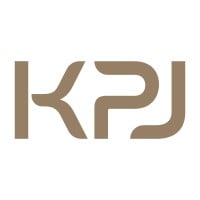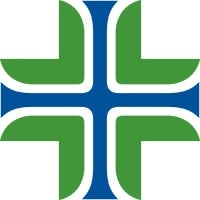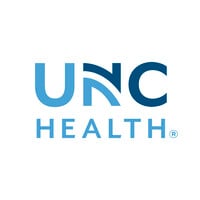
KPJ Healthcare Bhd Company Cyber Security Posture
kpjhealth.com.mySince its inception in 1981 as the first private specialist hospital in Johor, KPJ Healthcare has served communities and neighbourhoods nationwide for over 40 years. Our fundamental purpose since day 1 is the delivery of exceptional diagnosis, health treatment and care for all our patients. KPJ Healthcare operates 28 hospitals in Malaysia, as well as 2 hospitals in Indonesia, 1 in Bangladesh and 1 in Thailand. KPJ also has 4 Ambulatory Care Centres located in Kuala Lumpur, Pahang, Perak and Selangor. KPJ’s workforce today comprises close to 15,000 employees who support the services provided by more than 1,400 medical consultants specialising in various disciplines who treat more than 2.9 million patients annually. 19 KPJ hospitals are accredited by the Malaysian Society for Quality in Health (MSQH) while 4 are accredited by the Joint Commission International (JCI). On the education front, the KPJ Healthcare University College (KPJUC) which is located in Negeri Sembilan, offers more than 38 programmes from Foundation to PhD. This has helped KPJ’s hospital network expansion strategies as it ensures KPJ Healthcare has a ready pool of experienced and well-trained talent. We continue to be dedicated in being the preferred provider of healthcare through the innovative use of technology and by tapping the expertise of experienced consultants as well as qualified medical and non-medical employees who collaborate to offer the best diagnosis and treatment plans wherever we operate. Today, a reinvigorated KPJ continues to grow from strength to strength and is well positioned to continue creating sustainable value as the biggest private hospital group in Malaysia by bed count capacity and as a regional healthcare player focused on delivering world-class healthcare services, in line with our ‘Care for Life’ tagline. KPJ Healthcare has been a constituent of the Bursa Malaysia FTSE4Good Index since 2016. SSM Number: 199201015575 (247079-M)
KHB Company Details
kpj-healthcare-bhd
10,001+ employees
57153
62
Hospitals and Health Care
kpjhealth.com.my
Scan still pending
KPJ_2858867
In-progress
Between 800 and 900
This score is AI-generated and less favored by cyber insurers, who prefer the TPRM score.
 KHB Global Score
KHB Global Score.png)

KPJ Healthcare Bhd Company Scoring based on AI Models
| Model Name | Date | Description | Current Score Difference | Score |
|---|---|---|---|---|
| AVERAGE-Industry | 03-12-2025 | This score represents the average cybersecurity rating of companies already scanned within the same industry. It provides a benchmark to compare an individual company's security posture against its industry peers. | N/A | Between 800 and 900 |
KPJ Healthcare Bhd Company Cyber Security News & History
| Entity | Type | Severity | Impact | Seen | Url ID | Details | View |
|---|
KPJ Healthcare Bhd Company Subsidiaries

Since its inception in 1981 as the first private specialist hospital in Johor, KPJ Healthcare has served communities and neighbourhoods nationwide for over 40 years. Our fundamental purpose since day 1 is the delivery of exceptional diagnosis, health treatment and care for all our patients. KPJ Healthcare operates 28 hospitals in Malaysia, as well as 2 hospitals in Indonesia, 1 in Bangladesh and 1 in Thailand. KPJ also has 4 Ambulatory Care Centres located in Kuala Lumpur, Pahang, Perak and Selangor. KPJ’s workforce today comprises close to 15,000 employees who support the services provided by more than 1,400 medical consultants specialising in various disciplines who treat more than 2.9 million patients annually. 19 KPJ hospitals are accredited by the Malaysian Society for Quality in Health (MSQH) while 4 are accredited by the Joint Commission International (JCI). On the education front, the KPJ Healthcare University College (KPJUC) which is located in Negeri Sembilan, offers more than 38 programmes from Foundation to PhD. This has helped KPJ’s hospital network expansion strategies as it ensures KPJ Healthcare has a ready pool of experienced and well-trained talent. We continue to be dedicated in being the preferred provider of healthcare through the innovative use of technology and by tapping the expertise of experienced consultants as well as qualified medical and non-medical employees who collaborate to offer the best diagnosis and treatment plans wherever we operate. Today, a reinvigorated KPJ continues to grow from strength to strength and is well positioned to continue creating sustainable value as the biggest private hospital group in Malaysia by bed count capacity and as a regional healthcare player focused on delivering world-class healthcare services, in line with our ‘Care for Life’ tagline. KPJ Healthcare has been a constituent of the Bursa Malaysia FTSE4Good Index since 2016. SSM Number: 199201015575 (247079-M)
Access Data Using Our API

Get company history
.png)
KHB Cyber Security News
KPJ Healthcare Berhad First Quarter 2025 Earnings: Misses Expectations
KPJ Healthcare Berhad (KLSE:KPJ) First Quarter 2025 Results. Key Financial Results. Revenue: RM971.8m (up 7.0% from 1Q 2024).
KPJ Healthcare Berhad Full Year 2024 Earnings: Beats Expectations
Key Financial Results · Revenue: RM3.92b (up 15% from FY 2023). · Net income: RM331.1m (up 18% from FY 2023). · Profit margin: 8.4% (up from 8.2 ...
KPJ Pasir Gudang Specialist Hospital Partners with NetSfere for Secure and Compliant Messaging
KPJ Pasir Gudang Specialist Hospital (KPJ PGSH), one of the leading private healthcare providers in Malaysia, deployed the secure enterprise messaging platform.
KPJ Healthcare taps IBM watsonx to deliver AI personalised patient services
The collaboration is intended to enhance KPJ Healthcare's ability to manage routine patient information requests through an AI-powered chatbot ...
Revolutionising patient care with AI-driven innovation and transformation
“AI is allowing us to work faster, diagnose with greater accuracy and improve healthcare access — while keeping the human touch at the heart of ...
KPJ’s KRAFT Challenge 2025 invites visionary ideas to revolutionise healthcare
The initiative is focused on driving real-world innovation across key areas such as technological advancements, patient care, digitalisation, ...
Top companies recognised in Malaysia National and International Business Awards, Technology Excellence Awards 2023
Top companies recognised in Malaysia National and International Business Awards, Technology Excellence Awards 2023 · AI - Oil & Gas · Automation ...
KPJ Healthcare streamlines IT ops with Office 365
KPJ Healthcare Berhad has chosen to implement Microsoft's Office 365 and cloud solutions to upgrade and modernise its overall IT infrastructure ...
KPJ Healthcare expects continuing recovery in patient numbers this year
KUALA LUMPUR: KPJ Healthcare Bhd expect to see a continuing recovery in patient numbers and group performance this year.

KHB Similar Companies

MD Anderson Cancer Center
The University of Texas MD Anderson Cancer Center is one of the world's most respected centers devoted exclusively to cancer patient care, research, education and prevention. MD Anderson provides cancer care at several convenient locations throughout the Greater Houston Area and collaborates with co

NewYork-Presbyterian Hospital
At NewYork-Presbyterian, we put patients first. It’s the kind of work that requires an unwavering commitment to excellence and a steady spirit of professionalism. And it’s a unique opportunity for you to collaborate with some of the brightest minds in health care, while building on our success as on

Providence
Every day, 119,000 compassionate caregivers serve patients and communities through Providence St. Joseph Health, a national, Catholic, not-for-profit health system, driven by a belief that health is a human right. Rooted in the founding missions of the Sisters of Providence and the Sisters of St.

Netcare
The Netcare Group (JSE: NTC) offers a unique, comprehensive range of medical services across the healthcare spectrum, enabling us to serve the health and care needs of each individual who entrust their care to us. Our focus on implementing sophisticated digital systems will enable us to provide care

UNC Health
Our mission is to improve the health and well-being of North Carolinians and others whom we serve. We accomplish this by providing leadership and excellence in the interrelated areas of patient care, education and research. UNC Health and its 33,000 employees, continue to serve as North Carolina’s

SARquavitae
SARquavitae, personas que cuidan a las personas SARquavitae es la mayor plataforma de España de servicios sanitarios y sociales de atención a las personas. La plantilla, formada por 12.200 profesionales, ofrece más de 10.900 plazas repartidas por todo el territorio español y atiende a unas 200.0

Frequently Asked Questions (FAQ) on Cybersecurity Incidents
KHB CyberSecurity History Information
Total Incidents: According to Rankiteo, KHB has faced 0 incidents in the past.
Incident Types: As of the current reporting period, KHB has not encountered any cybersecurity incidents.
Total Financial Loss: The total financial loss from these incidents is estimated to be {total_financial_loss}.
Cybersecurity Posture: The company's overall cybersecurity posture is described as Since its inception in 1981 as the first private specialist hospital in Johor, KPJ Healthcare has served communities and neighbourhoods nationwide for over 40 years. Our fundamental purpose since day 1 is the delivery of exceptional diagnosis, health treatment and care for all our patients. KPJ Healthcare operates 28 hospitals in Malaysia, as well as 2 hospitals in Indonesia, 1 in Bangladesh and 1 in Thailand. KPJ also has 4 Ambulatory Care Centres located in Kuala Lumpur, Pahang, Perak and Selangor. KPJ’s workforce today comprises close to 15,000 employees who support the services provided by more than 1,400 medical consultants specialising in various disciplines who treat more than 2.9 million patients annually. 19 KPJ hospitals are accredited by the Malaysian Society for Quality in Health (MSQH) while 4 are accredited by the Joint Commission International (JCI). On the education front, the KPJ Healthcare University College (KPJUC) which is located in Negeri Sembilan, offers more than 38 programmes from Foundation to PhD. This has helped KPJ’s hospital network expansion strategies as it ensures KPJ Healthcare has a ready pool of experienced and well-trained talent. We continue to be dedicated in being the preferred provider of healthcare through the innovative use of technology and by tapping the expertise of experienced consultants as well as qualified medical and non-medical employees who collaborate to offer the best diagnosis and treatment plans wherever we operate. Today, a reinvigorated KPJ continues to grow from strength to strength and is well positioned to continue creating sustainable value as the biggest private hospital group in Malaysia by bed count capacity and as a regional healthcare player focused on delivering world-class healthcare services, in line with our ‘Care for Life’ tagline. KPJ Healthcare has been a constituent of the Bursa Malaysia FTSE4Good Index since 2016. SSM Number: 199201015575 (247079-M).
Detection and Response: The company detects and responds to cybersecurity incidents through {description_of_detection_and_response_process}.
Incident Details
Incident 1: Ransomware Attack
Title: {Incident_Title}
Description: {Brief_description_of_the_incident}
Date Detected: {Detection_Date}
Date Publicly Disclosed: {Disclosure_Date}
Date Resolved: {Resolution_Date}
Type: {Type_of_Attack}
Attack Vector: {Attack_Vector}
Vulnerability Exploited: {Vulnerability}
Threat Actor: {Threat_Actor}
Motivation: {Motivation}
Incident 2: Data Breach
Title: {Incident_Title}
Description: {Brief_description_of_the_incident}
Date Detected: {Detection_Date}
Date Publicly Disclosed: {Disclosure_Date}
Date Resolved: {Resolution_Date}
Type: {Type_of_Attack}
Attack Vector: {Attack_Vector}
Vulnerability Exploited: {Vulnerability}
Threat Actor: {Threat_Actor}
Motivation: {Motivation}
Common Attack Types: As of now, the company has not encountered any reported incidents involving common cyberattacks.
Identification of Attack Vectors: The company identifies the attack vectors used in incidents through {description_of_identification_process}.
Impact of the Incidents
Incident 1: Ransomware Attack
Financial Loss: {Financial_Loss}
Data Compromised: {Data_Compromised}
Systems Affected: {Systems_Affected}
Downtime: {Downtime}
Operational Impact: {Operational_Impact}
Conversion Rate Impact: {Conversion_Rate_Impact}
Revenue Loss: {Revenue_Loss}
Customer Complaints: {Customer_Complaints}
Brand Reputation Impact: {Brand_Reputation_Impact}
Legal Liabilities: {Legal_Liabilities}
Identity Theft Risk: {Identity_Theft_Risk}
Payment Information Risk: {Payment_Information_Risk}
Incident 2: Data Breach
Financial Loss: {Financial_Loss}
Data Compromised: {Data_Compromised}
Systems Affected: {Systems_Affected}
Downtime: {Downtime}
Operational Impact: {Operational_Impact}
Conversion Rate Impact: {Conversion_Rate_Impact}
Revenue Loss: {Revenue_Loss}
Customer Complaints: {Customer_Complaints}
Brand Reputation Impact: {Brand_Reputation_Impact}
Legal Liabilities: {Legal_Liabilities}
Identity Theft Risk: {Identity_Theft_Risk}
Payment Information Risk: {Payment_Information_Risk}
Average Financial Loss: The average financial loss per incident is {average_financial_loss}.
Commonly Compromised Data Types: The types of data most commonly compromised in incidents are {list_of_commonly_compromised_data_types}.
Incident 1: Ransomware Attack
Entity Name: {Entity_Name}
Entity Type: {Entity_Type}
Industry: {Industry}
Location: {Location}
Size: {Size}
Customers Affected: {Customers_Affected}
Incident 2: Data Breach
Entity Name: {Entity_Name}
Entity Type: {Entity_Type}
Industry: {Industry}
Location: {Location}
Size: {Size}
Customers Affected: {Customers_Affected}
Response to the Incidents
Incident 1: Ransomware Attack
Incident Response Plan Activated: {Yes/No}
Third Party Assistance: {Yes/No}
Law Enforcement Notified: {Yes/No}
Containment Measures: {Containment_Measures}
Remediation Measures: {Remediation_Measures}
Recovery Measures: {Recovery_Measures}
Communication Strategy: {Communication_Strategy}
Adaptive Behavioral WAF: {Adaptive_Behavioral_WAF}
On-Demand Scrubbing Services: {On_Demand_Scrubbing_Services}
Network Segmentation: {Network_Segmentation}
Enhanced Monitoring: {Enhanced_Monitoring}
Incident 2: Data Breach
Incident Response Plan Activated: {Yes/No}
Third Party Assistance: {Yes/No}
Law Enforcement Notified: {Yes/No}
Containment Measures: {Containment_Measures}
Remediation Measures: {Remediation_Measures}
Recovery Measures: {Recovery_Measures}
Communication Strategy: {Communication_Strategy}
Adaptive Behavioral WAF: {Adaptive_Behavioral_WAF}
On-Demand Scrubbing Services: {On_Demand_Scrubbing_Services}
Network Segmentation: {Network_Segmentation}
Enhanced Monitoring: {Enhanced_Monitoring}
Incident Response Plan: The company's incident response plan is described as {description_of_incident_response_plan}.
Third-Party Assistance: The company involves third-party assistance in incident response through {description_of_third_party_involvement}.
Data Breach Information
Incident 2: Data Breach
Type of Data Compromised: {Type_of_Data}
Number of Records Exposed: {Number_of_Records}
Sensitivity of Data: {Sensitivity_of_Data}
Data Exfiltration: {Yes/No}
Data Encryption: {Yes/No}
File Types Exposed: {File_Types}
Personally Identifiable Information: {Yes/No}
Prevention of Data Exfiltration: The company takes the following measures to prevent data exfiltration: {description_of_prevention_measures}.
Handling of PII Incidents: The company handles incidents involving personally identifiable information (PII) through {description_of_handling_process}.
Ransomware Information
Incident 1: Ransomware Attack
Ransom Demanded: {Ransom_Amount}
Ransom Paid: {Ransom_Paid}
Ransomware Strain: {Ransomware_Strain}
Data Encryption: {Yes/No}
Data Exfiltration: {Yes/No}
Ransom Payment Policy: The company's policy on paying ransoms in ransomware incidents is described as {description_of_ransom_payment_policy}.
Data Recovery from Ransomware: The company recovers data encrypted by ransomware through {description_of_data_recovery_process}.
Regulatory Compliance
Incident 1: Ransomware Attack
Regulations Violated: {Regulations_Violated}
Fines Imposed: {Fines_Imposed}
Legal Actions: {Legal_Actions}
Regulatory Notifications: {Regulatory_Notifications}
Incident 2: Data Breach
Regulations Violated: {Regulations_Violated}
Fines Imposed: {Fines_Imposed}
Legal Actions: {Legal_Actions}
Regulatory Notifications: {Regulatory_Notifications}
Regulatory Frameworks: The company complies with the following regulatory frameworks regarding cybersecurity: {list_of_regulatory_frameworks}.
Ensuring Regulatory Compliance: The company ensures compliance with regulatory requirements through {description_of_compliance_measures}.
Lessons Learned and Recommendations
Incident 1: Ransomware Attack
Lessons Learned: {Lessons_Learned}
Incident 2: Data Breach
Lessons Learned: {Lessons_Learned}
Incident 1: Ransomware Attack
Recommendations: {Recommendations}
Incident 2: Data Breach
Recommendations: {Recommendations}
Key Lessons Learned: The key lessons learned from past incidents are {list_of_key_lessons_learned}.
Implemented Recommendations: The company has implemented the following recommendations to improve cybersecurity: {list_of_implemented_recommendations}.
References
Additional Resources: Stakeholders can find additional resources on cybersecurity best practices at {list_of_additional_resources}.
Investigation Status
Incident 1: Ransomware Attack
Investigation Status: {Investigation_Status}
Incident 2: Data Breach
Investigation Status: {Investigation_Status}
Communication of Investigation Status: The company communicates the status of incident investigations to stakeholders through {description_of_communication_process}.
Stakeholder and Customer Advisories
Incident 1: Ransomware Attack
Stakeholder Advisories: {Stakeholder_Advisories}
Customer Advisories: {Customer_Advisories}
Incident 2: Data Breach
Stakeholder Advisories: {Stakeholder_Advisories}
Customer Advisories: {Customer_Advisories}
Advisories Provided: The company provides the following advisories to stakeholders and customers following an incident: {description_of_advisories_provided}.
Initial Access Broker
Incident 1: Ransomware Attack
Entry Point: {Entry_Point}
Reconnaissance Period: {Reconnaissance_Period}
Backdoors Established: {Backdoors_Established}
High Value Targets: {High_Value_Targets}
Data Sold on Dark Web: {Yes/No}
Incident 2: Data Breach
Entry Point: {Entry_Point}
Reconnaissance Period: {Reconnaissance_Period}
Backdoors Established: {Backdoors_Established}
High Value Targets: {High_Value_Targets}
Data Sold on Dark Web: {Yes/No}
Monitoring and Mitigation of Initial Access Brokers: The company monitors and mitigates the activities of initial access brokers through {description_of_monitoring_and_mitigation_measures}.
Post-Incident Analysis
Incident 1: Ransomware Attack
Root Causes: {Root_Causes}
Corrective Actions: {Corrective_Actions}
Incident 2: Data Breach
Root Causes: {Root_Causes}
Corrective Actions: {Corrective_Actions}
Post-Incident Analysis Process: The company's process for conducting post-incident analysis is described as {description_of_post_incident_analysis_process}.
Corrective Actions Taken: The company has taken the following corrective actions based on post-incident analysis: {list_of_corrective_actions_taken}.
Additional Questions
General Information
Ransom Payment History: The company has {paid/not_paid} ransoms in the past.
Last Ransom Demanded: The amount of the last ransom demanded was {last_ransom_amount}.
Last Attacking Group: The attacking group in the last incident was {last_attacking_group}.
Incident Details
Most Recent Incident Detected: The most recent incident detected was on {most_recent_incident_detected_date}.
Most Recent Incident Publicly Disclosed: The most recent incident publicly disclosed was on {most_recent_incident_publicly_disclosed_date}.
Most Recent Incident Resolved: The most recent incident resolved was on {most_recent_incident_resolved_date}.
Impact of the Incidents
Highest Financial Loss: The highest financial loss from an incident was {highest_financial_loss}.
Most Significant Data Compromised: The most significant data compromised in an incident was {most_significant_data_compromised}.
Most Significant System Affected: The most significant system affected in an incident was {most_significant_system_affected}.
Response to the Incidents
Third-Party Assistance in Most Recent Incident: The third-party assistance involved in the most recent incident was {third_party_assistance_in_most_recent_incident}.
Containment Measures in Most Recent Incident: The containment measures taken in the most recent incident were {containment_measures_in_most_recent_incident}.
Data Breach Information
Most Sensitive Data Compromised: The most sensitive data compromised in a breach was {most_sensitive_data_compromised}.
Number of Records Exposed: The number of records exposed in the most significant breach was {number_of_records_exposed}.
Ransomware Information
Highest Ransom Demanded: The highest ransom demanded in a ransomware incident was {highest_ransom_demanded}.
Highest Ransom Paid: The highest ransom paid in a ransomware incident was {highest_ransom_paid}.
Regulatory Compliance
Highest Fine Imposed: The highest fine imposed for a regulatory violation was {highest_fine_imposed}.
Most Significant Legal Action: The most significant legal action taken for a regulatory violation was {most_significant_legal_action}.
Lessons Learned and Recommendations
Most Significant Lesson Learned: The most significant lesson learned from past incidents was {most_significant_lesson_learned}.
Most Significant Recommendation Implemented: The most significant recommendation implemented to improve cybersecurity was {most_significant_recommendation_implemented}.
References
Most Recent Source: The most recent source of information about an incident is {most_recent_source}.
Most Recent URL for Additional Resources: The most recent URL for additional resources on cybersecurity best practices is {most_recent_url}.
Investigation Status
Current Status of Most Recent Investigation: The current status of the most recent investigation is {current_status_of_most_recent_investigation}.
Stakeholder and Customer Advisories
Most Recent Stakeholder Advisory: The most recent stakeholder advisory issued was {most_recent_stakeholder_advisory}.
Most Recent Customer Advisory: The most recent customer advisory issued was {most_recent_customer_advisory}.
Initial Access Broker
Most Recent Entry Point: The most recent entry point used by an initial access broker was {most_recent_entry_point}.
Most Recent Reconnaissance Period: The most recent reconnaissance period for an incident was {most_recent_reconnaissance_period}.
Post-Incident Analysis
Most Significant Root Cause: The most significant root cause identified in post-incident analysis was {most_significant_root_cause}.
Most Significant Corrective Action: The most significant corrective action taken based on post-incident analysis was {most_significant_corrective_action}.
What Do We Measure?
















Every week, Rankiteo analyzes billions of signals to give organizations a sharper, faster view of emerging risks. With deeper, more actionable intelligence at their fingertips, security teams can outpace threat actors, respond instantly to Zero-Day attacks, and dramatically shrink their risk exposure window.
These are some of the factors we use to calculate the overall score:
Identify exposed access points, detect misconfigured SSL certificates, and uncover vulnerabilities across the network infrastructure.
Gain visibility into the software components used within an organization to detect vulnerabilities, manage risk, and ensure supply chain security.
Monitor and manage all IT assets and their configurations to ensure accurate, real-time visibility across the company's technology environment.
Leverage real-time insights on active threats, malware campaigns, and emerging vulnerabilities to proactively defend against evolving cyberattacks.




